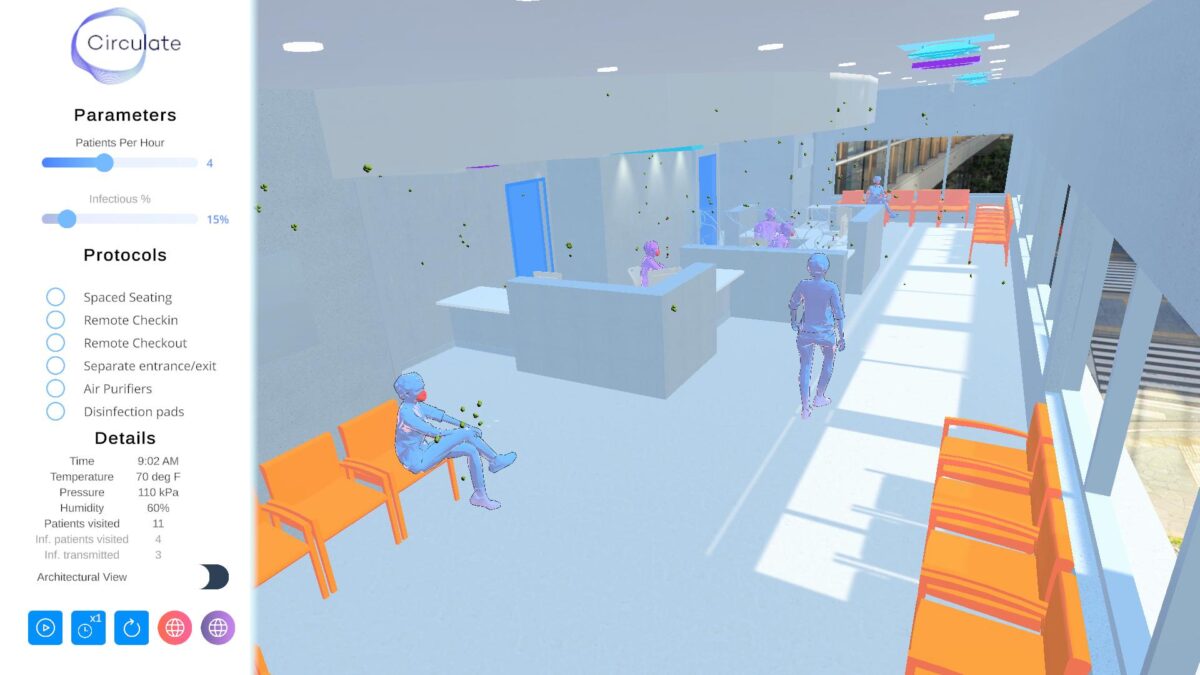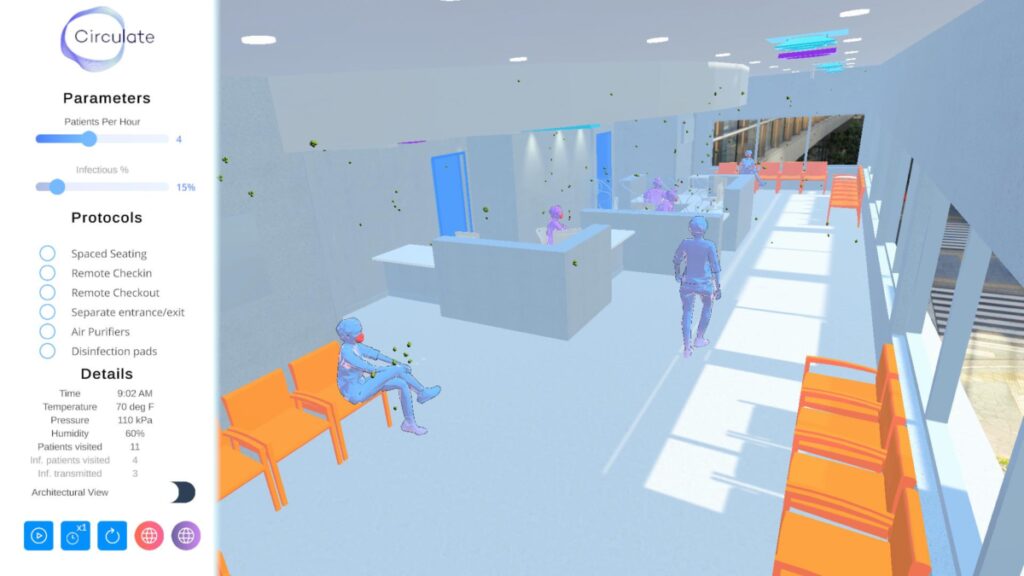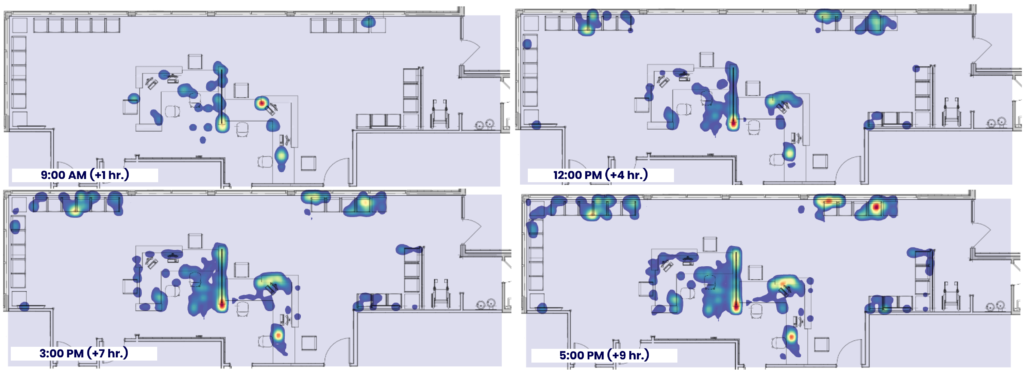Simulate airborne disease spread in digital twin solutions

The COVID-19 pandemic exposed critical weaknesses in preparation and mitigation tactics for airborne infectious diseases. One weakness, for example, is that protocols for infection prevention rely on generalized research and case studies. These resources often do not consider the specific conditions of the occupants and environment within a given facility. Traditional tools for simulating airborne particle spread, such as computational fluid dynamics (CFD), analyze static, steady-state systems without considering dynamic occupants in the space and real-time facility conditions. Human presence must be accounted for when designing new buildings or operating existing ones to maximize occupant safety and optimize energy efficiency.
The intersection of behavior, building design and occupant safety
To help improve occupant health and safety, Intelligent Medicine, a Siemens Software and Technology partner, developed a facility digital twin called Circulate™. The product provides real-time simulation of a facility’s environment based on building design, ventilation and occupant behavior. Generated simulations combine realistic airborne particle models, CFD and behavioral artificial intelligence to simulate viral airborne particle spread. Circulate evaluates the spread of airborne droplets or particles based on multiple building layouts, HVAC configurations, occupancy loads or facility protocols. It can then test to determine whether factors like an additional diffuser or open windows will make a space safer and how much.

In populated environments, such as hospitals, Circulate has been used to predict high-risk areas for surface contamination and person-to-person transmission. Architects and engineers can use this data to make design decisions that mitigate infectious airborne particle spread. This information also provides insights into where health and safety stakeholders must take additional precautions to keep occupants safe.

Multi-software integration
The partnership between Intelligent Medicine and Siemens allows for the integration of NX and Simcenter FLOEFD for NX into the simulation pipeline of Circulate. Additionally, Circulate allows NX, FLOEFD and other Siemens Digital Industries Software users to quickly simulate airborne particle spread, infection transmission and human behavior in their facilities.
To see Intelligent Medicine’s Circulate in action, request a demo.
About the author
Adam Ryason, Ph.D., is the founder and CEO of Intelligent Medicine Inc. Dr. Ryason received his Ph.D. from Rensselaer Polytechnic Institute. His research focuses are in digital twin and multimodal simulations.
Intelligent Medicine Inc. is a medical software and simulation startup based in Schenectady, New York, specializing in medical, artificial intelligence and virtual reality simulators. Intelligent Medicine is a Siemens Software and Technology Partner. Software and Technology partners are leaders in their domains and leverage the open Siemens Xcelerator portfolio to provide customers with a comprehensive set of integrated solutions.


